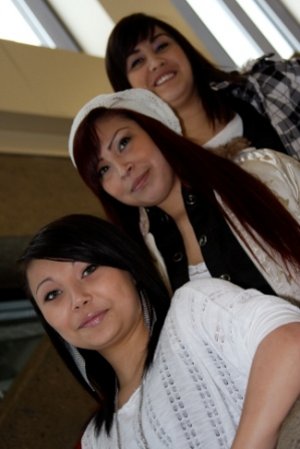
[Editor's note: This Tyee Solutions Society Series has explored how innovative educators across British Columbia are reversing a century of educational exclusion for kids of First Nations or aboriginal heritage -- the fastest-growing demographic in the province. For the most part, those innovations were based on ideas from beyond B.C.'s borders, with a local twist. In her concluding report for this series, Katie Hyslop finds a few more ideas from away that could be worth a try here at home.
For more on how this issue affects British Columbia's Interior, hear Katie Hyslop's multi-part conversation with Carolina de Ryk and Robert Doane of CBC Radio's Daybreak North.]
British Columbia may have one of the largest aboriginal populations in the country, but it isn't the only province whose first peoples are struggling to reconcile the history of colonialism, forced assimilation and abuse found in the residential school system with the need to educate and prepare their children for life in the 21st century. Nor is ours the only post-colonial government yet to find the right formula for helping those populations get an education.
But that has meant that many of the ideas being implemented by indigenous educators in B.C. today were taken from other First Nations, across Canada and the world, who are struggling with the same task. Inspiring innovations reported earlier in this series, such as balancing education and culture through the development of language nests and immersion schools, are the result. Here are a few more examples of successful or promising programs that indigenous people and public governments nearby and around the world are using to increase academic success.
Alberta leads the way in aboriginal-focused schools
Alberta has the third highest population of aboriginal people in Canada, and it's growing fast: the demographic jumped 23 per cent to nearly 250,000 people from 2001 to 2006. It's also the youngest population, with almost one-third of aboriginals less than 14 years old, making up almost nine per cent of children under the Edmonton public school board. But according to Assistant Superintendent Bruce Coggles, that percentage should be a lot higher.
"There's a fairly significant number of First Nations students that for whatever reason choose not to self-identify. They just want to be mainstream students and not want to be part of a sub-group within a system," says Coggles. "Even if we're aware that they're First Nations, they're not part of the population that's tracked."
This applies to aboriginal academic rates, too, so the district doesn't calculate aboriginal graduation rates. Nonetheless, in 1999, the district knew aboriginals weren't graduating at a high enough rate, and were dropping out far too often.
"We just felt we were losing too many students, and had to find a means or a strategy to increase our success level. We know it's a growing part of our population, and we just weren't satisfied with the results. So we were looking at alternatives," says Coggles.
The school board created an aboriginal task force to find solutions. One of the standout programs this created is Amiskwaciy Academy, an aboriginal-focus Grade 7 to Grade 12 school -- the first of its kind in Canada.
Located in the old Edmonton Municipal Airport terminal in city's centre, Amiskwaciy Academy opened in 2002 to all students in the district, although the approximately 300 students currently enrolled are all First Nations. There are two elders attached to the school who provide spiritual guidance and student counselling; there's a sweat lodge. Classes are offered on aboriginal drumming, where students have the chance to make their own drums. And every school day starts with a Cree song and a drumming circle for all the students, teachers and staff in the main foyer of the school.
There are aboriginal-focused options for curriculum, but unlike more rural areas, Coggles says most of the students at Amiskwaciy are urbanized and don't connect to indigenous traditions in the same way as their rural peers. "You make assumptions about heritage and assume that there's interest and knowledge in all the traditional ways. There isn't always. So rather than make things mandatory, there's opportunities for students to choose options that can have more traditional content in it," he says.
Initially, the school put more emphasis on recognition of culture and traditions, as well as providing kids with positive role models by hiring a majority of aboriginal teachers -- approximately two-thirds of the faculty. The aim was to improve student self-esteem and attendance, and then move on to academics. But Coggles says it's time to switch focus to academics, "because [Amiskwaciy's graduates] have to be able to put their results beside the other high schools and show that their results can be just as good as anybody."
That could mean fewer aboriginal teachers in the future. "At this point," says Coggles, “we're kind of saying the first thing we need is really strong teachers in their subject areas, and if we can get that person and have them First Nations as well, then that's the best of both worlds. But the first and more important thing is to have highly qualified teachers."
Again, Edmonton public school board doesn't track aboriginal academics, so there are no numbers to prove students in the Amiskwaciy program are improving. But Coggles sees signs of success. "We've gone through a few growing pains in getting it established, but we've got more stability," he says. "We're pleased that we're moving in the right direction, but we've got a ways to go yet."
Hawaiian schools make a comeback
At about the same time that British Columbia began forcing First Nations parents to send their children to English-only residential schools, much the same thing was happening in Hawaii. Native Hawaiians were forced into public, English-speaking schools starting in 1896, when their language -- Ōlelo Hawai'I -- was made illegal. Although there are differing accounts of what this meant -- some sources assert that Hawaiian language newspapers continued to be published while others claim parents were reprimanded for speaking the language to their children -- the ban succeeded in reducing Ōlelo Hawai'i from the island's predominant language, to one spoken today by six per cent of the population, according to the American Community Survey. But that's not an entirely accurate number as there are no statistics available on the number of fluent speakers versus those that know a few words and phrases.
What's clear is that until their language was outlawed, native Hawaiians had maintained a very successful education system on their own, says Kau'ilani Sang, an educational specialist with the State Department of Education's Hawaiian Language Immersion Program.
"Hawaiians have had 'schools' since before Western contact," Sang says. "The imposition of Western beliefs on education, and the banning of the Hawaiian language in schools, led to a demise of one of the most literate nations in the world, with thousands of text documents written in Hawaiian by Hawaiians," she wrote in an email to Tyee Solutions Society.
A change in the state constitution in 1978, however, not only made Ōlelo Hawai'i an official state language, it also mandated a state duty to provide natives with education in their own language and culture. Within a decade, the government began operating Hawaiian immersion schools. Today there are 21 such schools within the public education system, as well as immersion early childhood education and university programs.
The 21 immersion schools integrate indigenous Hawaiian language, culture and history into the curriculum and are taught by a majority of indigenous teachers. In order to teach there, educators must complete a teaching degree, a four-year language program and a Hawaiian studies degree.
"The foundation of most immersion schools is to teach the language with the belief that without the culture you cannot teach the language," Sang says. "If you look at the vision of most of the schools, they're trying to produce proficient Hawaiian language speakers by the time they leave in the 12th Grade."
Only about 2,000 students are enrolled in the 21 schools. With a native Hawaiian population of 80,337, most children go to mainstream schools where teachers are unprepared to include native language and culture in the curriculum. It's just one of the drawbacks to operating a native education system as a subset of the larger public education system.
"It's limited to the preparedness of those on staff," says Sang, "to be compassionate towards trying to revitalize Hawaiian language. And because we're confined to different federal and state laws, our vision for what we're trying to do sometimes gets pushed to the side. So when it comes down to decision-making, there's a lot of advocacy that goes on outside of the system to try and get the system to understand what we're trying to do. And that's the difficult part, because while the system is required to do the job they don't necessarily have the skills or the buy-in to make the right decision."
There are pluses, however, like access to facilities and Department of Education infrastructure. And the program is working: students are leaving the program as fluent speakers, although there are no statistics on indigenous graduation rates in Hawaii, either.
"I'm pretty confident that the success rate in terms of graduation is relatively high -- I almost want to say 100 per cent. I haven't heard of any teacher or student [who] has failed, but I have heard that students have dropped out," says Sang.
Parental support of education is key: Simon
When it comes to the vitality of traditional language, the Inuit are the exception to the rule: as of 2006, 69 per cent of Inuit could converse in their language, with half speaking it regularly at home. But the majority of Inuit children attend public schools, where the main language of instruction is English or French. This hasn't resulted in a loss of traditional language, but it does prove difficult for students whose first language is Inuit.
Struggles with language only add to the socio-economic issues facing many Inuit families, such as poverty, overcrowded housing, substance abuse and physical and sexual abuse. As a result, 75 per cent of Inuit never finish high school, some of the worst academic outcomes in Canada.
Inuit leaders from across the four Inuit Arctic regions which span northern Canada from Labrador to the Yukon -- Inuvialuit, Nunavut, Nunavik and Nunatsiavut -- came together with the federal, provincial and territorial governments to develop a National Strategy on Inuit Education, released in mid-June.
The strategy calls for mobilizing parent support for education, increasing bilingual (Inuit and English or French) curriculum and instructors, investing in early education, providing external social supports to students, investing in Inuit-centred curriculum and resources, establishing an Inuit writing system, creating an Inuit university and improving methods for measuring and assessing student success.
Mary Simon, president of Inuit Tapiriit Kanatami (ITK), the national organization representing the Inuit, has targeted results within a decade. "We hope that within five to ten years we will significantly close the gap in high school graduation rates with southern Canada, and experience a corresponding increase in the number of Inuit who graduate from university," Simon wrote in an email to Tyee Solutions Society.
The strategy puts particular emphasis on parental support, saying Inuit organizations and public governments can only do so much to encourage academic success. The rest is up to parents, to motivate and support their child's participation in the school system.
That can be a challenge for some families. "Parents who had negative experiences with the residential school system," Simon observes, "are less likely to be supportive of their children in the current education system. Our National Inuit Education Strategy wants to address this issue by engaging parents in the education of their children, and working with parents to ensure support for students in school."
The plan is still in its early stages. A National Centre for Inuit Education is set to open this fall, followed by the appointment of an Inuit education secretariat to develop the implementation plan, dictating who is responsible for what actions, and its cost. But Simon is confident that will be accomplished by early next year.
Nation to First Nation education aid
Canada's federal government has, to be generous, ground to make up with the country's aboriginal population. It was the Federal Crown that partnered with Christian organizations to introduce residential schools as an overt and nearly successful attempt to erase the "Indian" in children by severing them from their language, culture and families. With the exception of some publicly funded private schools, churches are out of the game today, but the feds still oversee aboriginal education on reserves. And if indigenous education advocates are right, the system they're running is still failing First Nations kids.
That may, finally and perhaps, be about to change. This past June, the Government announced a new partnership with the Assembly of First Nations: a Joint Action Plan for aboriginal education to start with a national panel discussion on that that should entail. The panel has two indigenous representatives -- George Lafond, former chief of the Saskatoon Tribal Council and former special assistant to the federal minister of Indian and Northern Affairs and Caroline Krause, an aboriginal educator formerly with the Vancouver school board and the University of British Columbia's faculty of education -- and one Caucasian, Scott Haldane, president and CEO of YMCA Canada.
The panel has already begun travelling across the country, speaking with aboriginal parents, children, chiefs, councils and elders; regional and national First Nations organizations; the private sector; the provinces; as well as any interested private parties. They're expected to deliver two reports: a mid-way progress report, and a final report with recommendations by 2011.
Here in British Columbia, aboriginal education advocates give the provincial government some credit for recognizing before their federal counterparts that education is something aboriginals need to be involved with. Victoria has made Aboriginal Education Agreements -- pacts signed between school boards and local native governments specifying aboriginal content in school -- mandatory for all 60 B.C. school districts. The Ministry of Education has introduced First Nations English, social studies, and math courses. And they've signed an agreement with the First Nations Education Steering Committee and the federal government that says aboriginals have the right to teach their own children. They even passed an act to solidify the agreement.
"The inclusion of authentic aboriginal histories and knowledge throughout the B.C. curriculum enriches the educational experience of all students. Culturally relevant learning allows for the inclusion of local traditional knowledge, histories and aboriginal languages and is key to improving success and achievement for aboriginal students," a Ministry of Education spokesperson told Tyee Solutions Society via email.
Yet critics say it's still not enough. The provincial government doesn't provide enough funding to adequately support language revitalization programs, for one concern. Few students enrol in First Nations-focused courses in secondary school, in part critics say because the ministry has failed to inform parents and students that the course credits qualify for post-secondary admission. And Aboriginal Enhancement Agreements may be mandatory, but there is no system in place to hold districts to their promises or to measure their progress.
Aboriginal British Columbians are confident they have the knowledge and skills to educate their own children, but not the resources to do so. After years of broken promises from post-colonial governments, matched by broken lives for thousands of First Nations and Métis British Columbians, what's common to these stories of collaboration is that, while indigenous people may have the know-how to bring their children out of the academic shadows, it's much easier on all of us if they don't have to do it alone.
[Find more Rights and Justice reporting on The Tyee.] ![]()
Read more: Indigenous, Rights + Justice, Politics









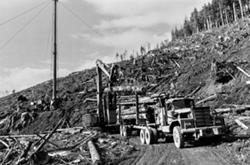
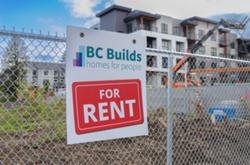

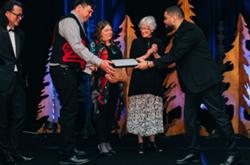

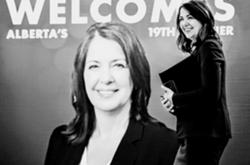

Tyee Commenting Guidelines
Comments that violate guidelines risk being deleted, and violations may result in a temporary or permanent user ban. Maintain the spirit of good conversation to stay in the discussion.
*Please note The Tyee is not a forum for spreading misinformation about COVID-19, denying its existence or minimizing its risk to public health.
Do:
Do not: